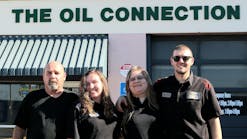When it comes to goal-setting, you may have the end in mind, but how to get there can be difficult to navigate. Just ask Scott Wheeler, president of Automotive Consultants Group. He helps owners plan out and execute their goals all the time. He has a couple different techniques up his sleeve to help get operators started, too. Here’s the inside scoop on all of his tactics, from planning all the way to staying committed through the process.
Planning
Setting SMART Goals
It’s important to have goals in mind, but it’s also important to have the right goals in mind to be able to reach them. Many business coaches, like Wheeler, have shop owners set SMART goals—Specific, Measurable, Achievable, Realistic, and Timely.
In order to achieve the goal, Wheeler says you need to break it down into subgoals and to put a timeline on everything. This way, operators will come in first thing Monday morning and know they need to do X, Y and Z on their lists.
For the daily car count example, putting this as your goal makes it an overly broad statement. Breaking it down into subgoals will make each statement specific and measurable, kind of like creating little building blocks to get to your goal, Wheeler says.
“Goals are shot out there all the time that are underreaching or overreaching,” Wheeler says.
For example, if an operator is barely hitting $1 million in revenue per year and wants to hit $5 million, this goal is probably not achievable or realistic within a year. Instead, operators need to consider why this goal is important, and ease up on the goal to make it more realistic.
It’s all about asking yourself: Where are we now? Where should we be? How do we get there?
Try it Out
Your Goal: __________________________
Now, ask yourself:
Is it Specific?
If not, make it: ___________________
Is it Measurable?
If not, how long do you expect it to take? ___________________
Is it Achievable?
If not, how can you make it more achievable? ___________________
Is it Realistic?
If not, what’s a more realistic goal? ___________________
Is it Timely?
If not, how can this goal be achieved in a shorter timespan? ___________________
Achieving Personal and Business Goals
Did you know that most personal goals and business goals are related? This is why planning out a structure to meet your goal is important, too. With a structure in place to remedy, operators can surely achieve both. A more common personal goal that Wheeler gets a lot is planning trips and spending more time with family. One of his clients had this personal goal in mind, also having a business goal of generating $1 million in sales that year.
In order to achieve both, you need to have a business goal and plan in place. In this example, they’ll have to organize their business and schedule more, listing out the details on what needs to happen each day, and what billable hours each technician needs to turn in order to get to $1 million. Once they determine this, they can come up with a daily plan to get there.
And that also means expecting obstacles to come your way, too. Consider your shop’s culture, for example. One technician may be really handy, but they have a short temper. Wheeler says the operator needs to address the temper and then assess how valuable they are to the operation.
“I try to build in contingencies,” Wheeler says. “Your goals should anticipate roadblocks, and if you hit a roadblock, you better have a contingency ready to go.”
Try it Out
Your Goal: _________________________
Answer the following:
- What personal goal is restricting you from reaching this business goal (or vice versa)?
- How will this personal goal help you reach this business goal?
- What steps will you take to achieve both of these goals?
- Break them down. How do you achieve this goal? What items are necessary? Where do I go to get the necessary supplies?
- What issues could I possibly run into to achieve these goals?
- What contingency plans do I have/need in place?
Sticking to It
Keeping the Triangle Together
Wheeler says to think of sticking to a goal like a triangle. In the triangle, change is located in the middle and each leg represents an aspect of how a goal is reached: planning, action, and commitment. If any one of those legs are missing, the triangle collapses.
For example, Wheeler is working with a shop owner who plans to open five locations within the next five years.
First, the operator needs to have a plan put in place, breaking down that goal to when they plan to open their second location, which is within the next two years. Then, he needs to back out of that goal even more to take action and create a timeline so it will be easy to commit, like creating a daily goal of what needs to be done each day to ensure the goal is met, and put these goals into present tense to put action to it.
Try it Out
Your Goal: _________________________________
What’s your Plan?
______________________________________________________
______________________________________________________
______________________________________________________
______________________________________________________
What’s the timeline for each to stay Committed?
______________________________________________________
______________________________________________________
______________________________________________________
______________________________________________________
What present Actions do you need to complete every day?
______________________________________________________
______________________________________________________
______________________________________________________
______________________________________________________





